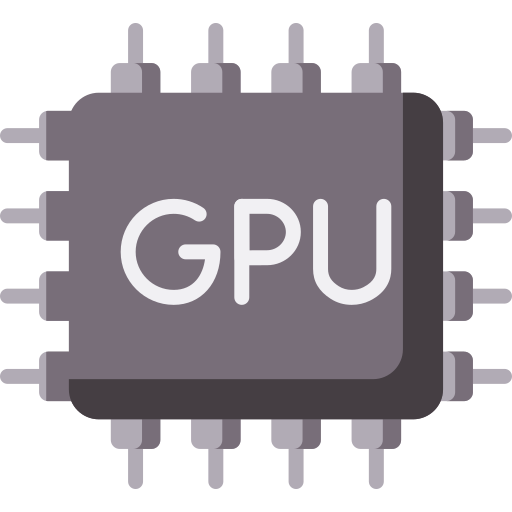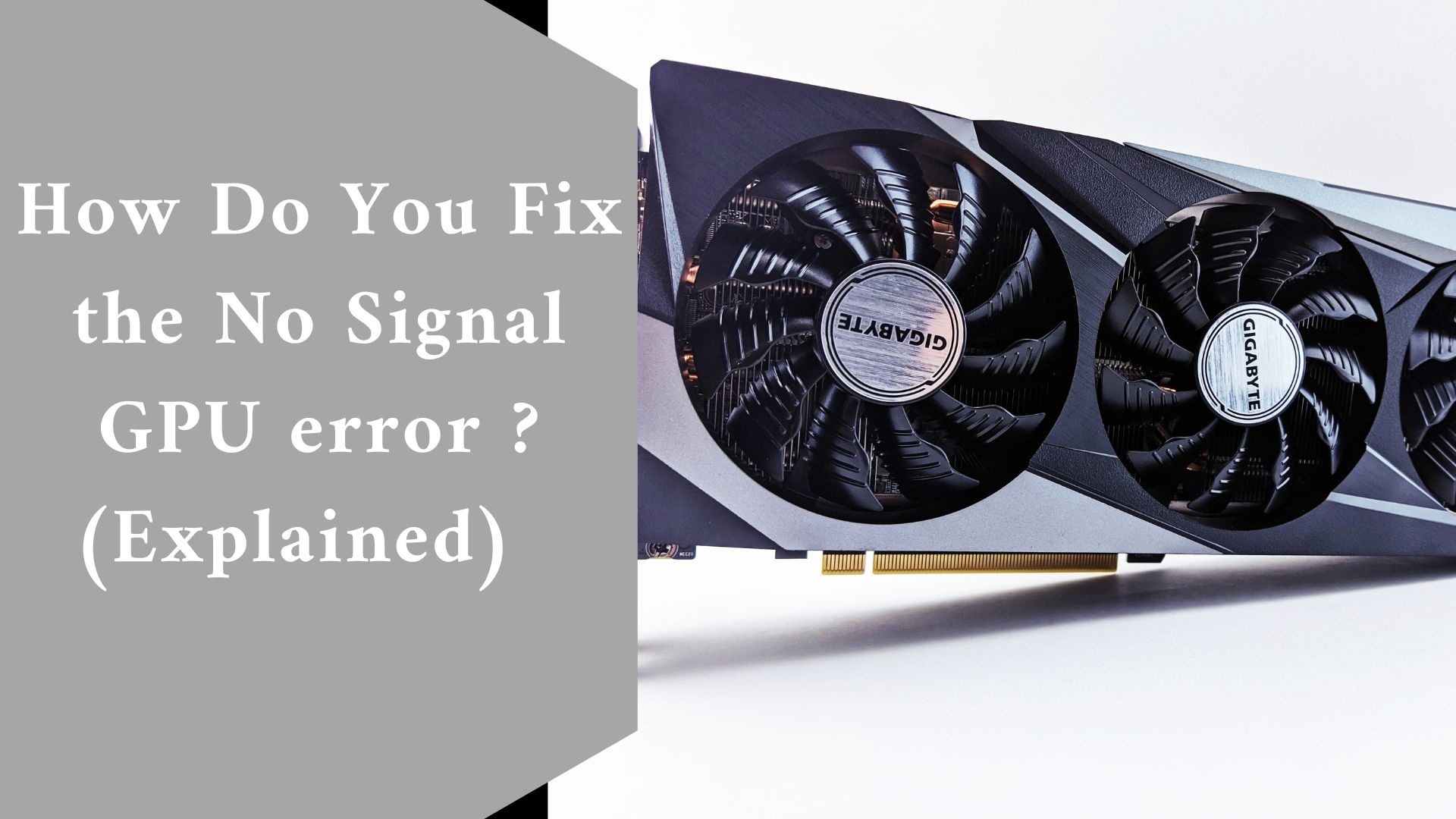Although a malfunctioning video card can produce a GPU no signal error, if you’ve already changed the video card and are still getting the error, the problem is caused by something else.
Error with the Cable
Check the tightness of the cable that links your video card to your monitor. If the cable came out of the socket when moving the display or computer case, check both ends.
Examine the length of the wire for signs of physical damage that could be causing the issue.
Examine the connector pins to ensure that none are bent or broken.
Monitor Error
If you’ve changed the video and are confident that the cables aren’t the problem, the problem could be with the display.
Incorrect Video Mode
To connect to the graphic cards, you can utilize a variety of input sources on monitors and HDTVs.
If the display allows you to select an input source, be sure it matches the cable used to connect to the computer.
Error in the Video Card Slot
Your video card will not function correctly if it is not properly positioned or is plugged into the incorrect slot on your motherboard
Check your motherboard’s handbook to check that the slots are compatible with the video card.
Resolve the GPU No Signal
Now that you understand why your screen may be flashing a “no signal error,” below are the answers for each mistake.
-
Fix Error with the Cable
If you have a cable mistake, changing your cables is the best and safest choice.
A defective cable may produce intermittent difficulties, such as a wrong color display, but if the damage is serious enough, there will be no signal.
-
solve the Monitor Error
To observe the findings, connect your computer to a second monitor. If you don’t have another computer display, you might be able to connect your video card to a television.
Most televisions feature VGA, DVI, and HDMI inputs for connecting your PCs. If the error occurs again when connecting to a different display device, you can proceed to investigate other computer components.
-
fix the Incorrect Video Mode
If your display does not automatically recognize the input source you are using, this could be the source of the problem.
For information on changing the display mode, consult the user manual for your monitor.
-
Fix Error in the Video Card Slot
If you pressed the video card into the slot, it could have been destroyed. Check that the power supply unit’s connection is linked to your video card.
Many current video cards require PCI-E power hookups to function properly.
To determine whether the problem is with the cable or the display, use the integrated video card on your motherboard.
Final thought
There you go now! I believe that this guide was helpful to you and that it helped you fix the problem. If you have tried all the fixes and still there is no solution, then it is high time to engage an expert.
Thanks for reading and please don’t forget to leave a comment in our comment section below.
Frequent Ask Questions
Why Is My GPU Not Producing Video?
A dark screen can be caused by a variety of issues of varying severity levels. Aside from the reasons listed above, below are some other reasons why your GPU may not be producing video.
If one of the slots is broken, the CPU card can be installed in another.
To resolve this problem, switch the GPU slot by performing the following steps:
- Remove the rear cover of your case.
- Turn on the computer and examine the graphics card’s fan to ensure it is operating.
- If the graphics card fails to function, the slot could be to blame.
- Turn off your computer and remove the graphic card by opening the case.
- Look for another slot, insert the card, and see if anything changes.
When you change your graphics card, you may obtain an error message claiming that the graphics card was not detected.
You can resolve these issues by following the procedures below:
- To reach it, type “Control Panel” into the Windows Search Box.
- Choose “Device Manager” from the list of possibilities.
- Double-click on “Display Adapters” to reveal the driver’s device.
- Click on the device to open a page with several tabs.
- The driver version, which indicates whether or not the driver has been updated, can be found by clicking “Driver.”
- If the version number does not indicate if the driver is the most recent version, you can update it to get the most recent version.
- Follow the on-screen directions to complete the upgrade.
Why is the GPU reporting no signal when the fans are spinning?
If your GPU displays a no signal error but the fans are operational and spinning, you will almost certainly need to reseat the card in the slot.
Reseating the memory is a frequent remedy to the no video output error message.
To resolve this issue, simply follow these steps:
- Remove each memory stick, wipe its contacts, blow the slot, and replace it.
- Also, make sure the memory slot lever is up and that the memory sets are all in the matching color-coded slots.
- Rep with the graphics card.
- Ensure that all PCI-E wires are securely attached to the graphics card.
- Then, for approximately a minute, unhook the monitor cable and power cord.
- The monitor will be reset.

How Do You Fix the No Signal GPU error ? (Explained)
Why is there no signal from the GPU and the fan is not spinning?
No signal GPU fault is one thing, but when both occur at the same time, you need to go to the bottom of the problem.
- If your GPU isn’t receiving any signals and the fans aren’t spinning, make sure it’s correctly connected to your power source.
- If you have a graphics card that does not require a PCIe connection from your power supply, such as the Gigabyte GeForce GTX 1650 OC, and the fans are not spinning and no GPU signal is present, then something else is wrong.
- If the fans on your graphics card stop spinning, you should remove them and clean them.
- If you have an outdated graphics card installed and the fans no longer spin, re-oiling the fan bearing may be able to extend its life.
- If the fans on your older graphics card aren’t rotating, it’s probably time to replace it.
Why is there no signal from the GPU after boot?
If no signs appear after a system reboot, you may have a power issue.
Just because your fans are running and your motherboard light is on does not mean you have enough power in the power supply to run the system.
Consider the following solutions:
- The power supply might die slowly and appear to be operating; double-check the connection to ensure it is stable.
- If your power supply is at least 5 years old, you should consider replacing it because power supplies deteriorate over time.
- You might also try a different monitor or run your old monitor through its paces on a separate PC.
Why does the GPU turn on yet produce no signal?
If your GPU has turned on but you still receive a no signal error, you should:
- Check that the GPU, as well as the 8-pin and 24-pin power connections, are properly positioned in the motherboard.
- Start the computer with only the mobo and GPU power connections, a single stick of RAM, and the power switch header connector connected. If you get a signal, begin plugging in the rest of the components one by one.
- Check that the DVI/VGA or HDMI cable is snug on both the display and the rear of the computer. Try testing it to rule out a faulty DVI/VGA or HDMI cable.

